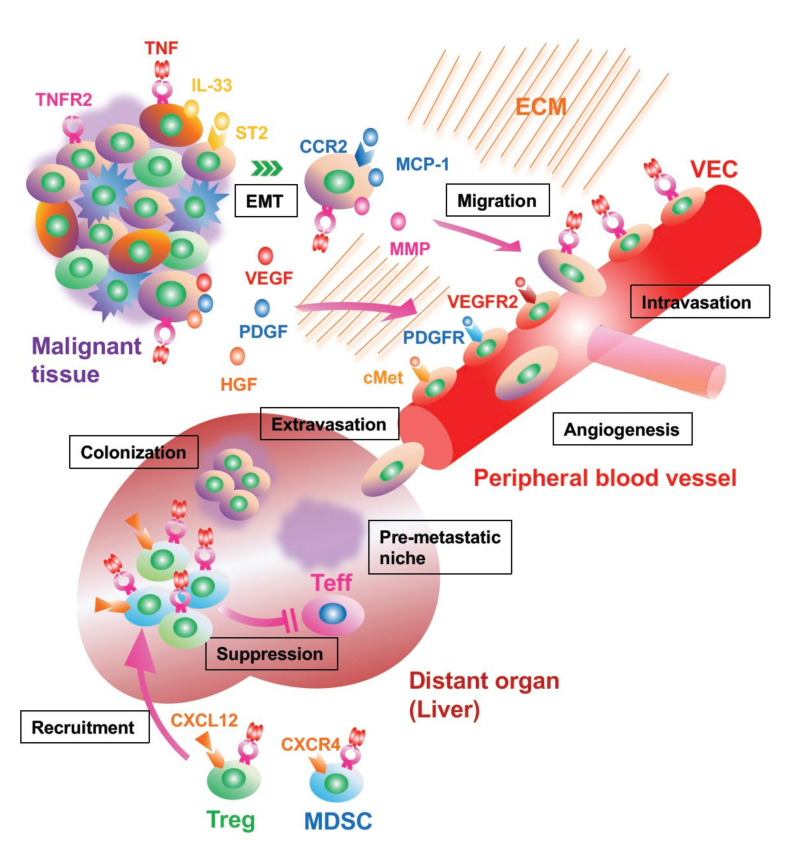Figure 3.
Emerging mechanisms of cancer metastasis via TNFR2 signaling. Cancer cells can leave malignant tissue and migrate into the extracellular matrix (ECM) by the endothelial mesenchymal transition (EMT), a process driven via IL-33 released from cancer-associated fibroblast (CAF) activated via TNF/TNFR2 signaling. By autocrine action of macrophage chemotaxis protein-1 (MCP-1) and secretion of matrix metalloprotease (MMP), the cancer cell invades into the blood capillary newly generated by angiogenesis. The proliferation of vascular endothelial cell (VEC) is also accelerated via TNFR2 signaling in addition to the interaction of vascular endothelial growth factor (VEGF)/VEGFR2, platelet derived growth factor (PDGF)/PDGFR, and hepatocyte growth factor (HGF)/cMet. Before and after the metastasis, TNFR2+ regulatory T cells (Tregs) and myeloid-derived suppressor cells (MDSCs) are recruited to the site from bone marrow with upregulated C-X-C motif chemokine receptor 4 (CXCR4) expression after the binding of TNF. These immunosuppressor cells can establish premetastatic niches by downregulating effector T cells (Teffs).

